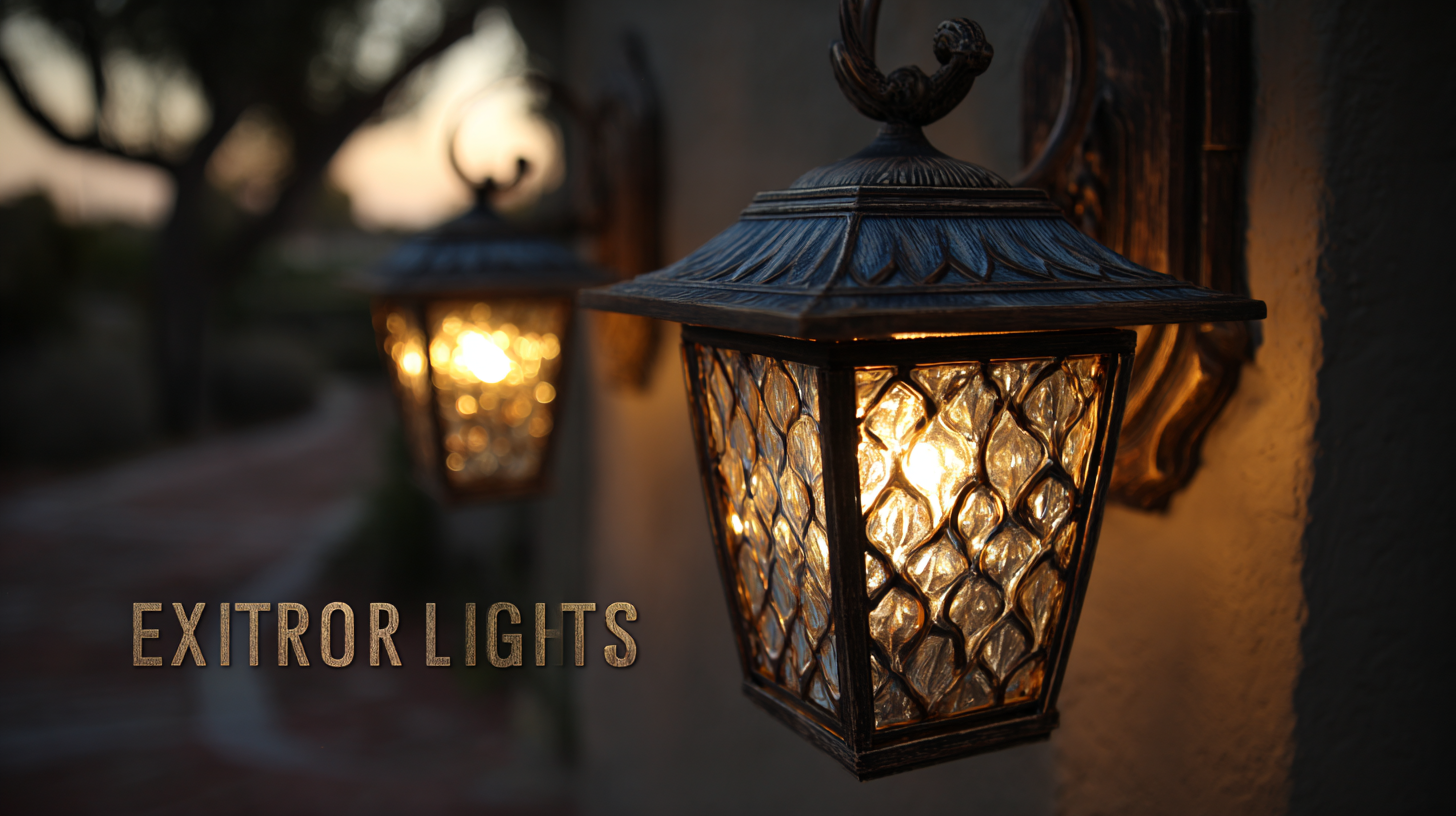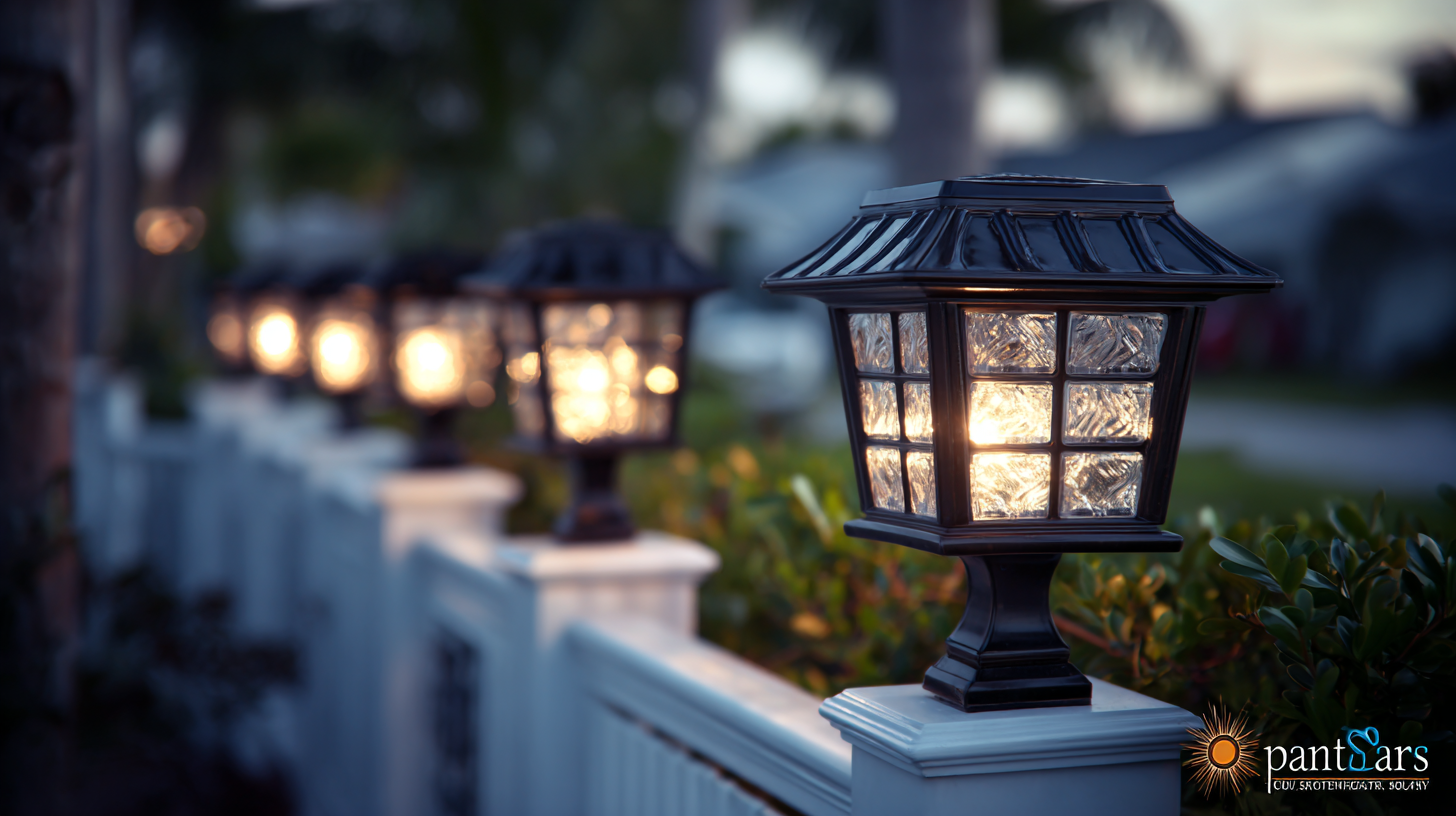Temporary & Portable Solar Lighting
Understanding Industry Standards for Best Exterior Solar Lights
 In recent years, the demand for sustainable energy solutions has surged, with exterior solar lights emerging as a leading choice for homeowners and businesses alike. According to the latest report from the Solar Energy Industries Association (SEIA), the solar lighting market is expected to grow by 25% annually, driven by advancements in technology and increasing awareness of environmental concerns.
In recent years, the demand for sustainable energy solutions has surged, with exterior solar lights emerging as a leading choice for homeowners and businesses alike. According to the latest report from the Solar Energy Industries Association (SEIA), the solar lighting market is expected to grow by 25% annually, driven by advancements in technology and increasing awareness of environmental concerns.
Exterior solar lights not only contribute to reducing energy consumption but also offer versatility, allowing for various applications, from garden aesthetics to enhanced security. With an estimated global market size projected to reach $2.3 billion by 2025, understanding industry standards becomes essential for consumers seeking to make informed decisions. This blog aims to provide a comprehensive comparison of the best exterior solar lights available today, highlighting crucial features and performance metrics that distinguish the top products in this burgeoning market.
Key Factors Driving the Growth of Exterior Solar Lights by 2025
As we approach 2025, the exterior solar lights industry is poised for significant growth driven by several key factors. One of the primary drivers is the increasing awareness of sustainable living. Homeowners are becoming more conscious of their energy consumption and are actively seeking eco-friendly alternatives. Solar lights not only provide illumination but also help reduce electricity bills, making them an appealing choice for those looking to cut costs and minimize their carbon footprint.

Another factor contributing to this trend is technological advancements. Modern solar lights boast enhanced efficiency and longer battery life, appealing to consumers who demand reliable performance. With innovative features such as motion sensors and smart connectivity, these products are becoming more versatile and user-friendly.
Tip: When selecting exterior solar lights, consider the solar panel quality and battery capacity. Higher quality panels can absorb more sunlight, leading to better performance even on cloudy days. Additionally, look for lights with adjustable brightness settings to better fit your outdoor ambiance needs.
Furthermore, the aesthetic appeal of solar lights plays a crucial role in their popularity. With numerous designs available, homeowners can easily find lights that complement their outdoor decor.
Tip: Choose solar lights that match your landscaping style to enhance the overall look of your property. Whether it's modern, rustic, or traditional, there’s a solar light design that can seamlessly integrate with any exterior theme.
Impact of Technology Advancements on Solar Light Efficiency and Performance
The rapid advancements in technology have significantly enhanced the efficiency and performance of exterior solar lights, making them a preferred choice for eco-conscious consumers. With the global solar light market projected to grow at a CAGR of 5.9% from 2023 to 2033, it is crucial for homeowners to stay informed about the latest innovations. Modern solar lights now incorporate smart technology, such as motion sensors and automated dimming, which not only prolong battery life but also provide increased security for outdoor spaces.
**Tips:** When selecting solar lights, consider options with LED bulbs, as they are more energy-efficient and provide brighter illumination compared to traditional bulbs. Look for products with a higher lumen output for effective lighting in larger areas. Additionally, choose lights equipped with solid-state batteries for better performance in varying weather conditions.
As technology progresses, features like solar tracking and improved photovoltaic cells are becoming standard in new solar lighting products. These advancements contribute to better energy absorption and optimal performance even on cloudy days. Consumers should prioritize brands that are developing and integrating these technologies for long-lasting and more reliable solar lighting solutions.
**Tips:** Always check the warranty and lifespan ratings of solar lights, as quality materials can significantly affect durability. Additionally, research the installation requirements; many products are easier to set up than you might think, which can save time and money in professional installation costs.
Comparative Analysis: Solar Lights vs. Traditional Outdoor Lighting Solutions
When comparing solar lights to traditional outdoor lighting solutions, several key factors come into play, including energy efficiency, cost-effectiveness, and ease of installation.
Solar lights harness sunlight and convert it into electricity, which significantly reduces energy costs. In contrast, traditional lighting systems, which rely on electricity from the grid, incur ongoing expenses that can accumulate over time.
The innovative technology of solar lights allows homeowners to take advantage of renewable energy, often resulting in substantial savings on utility bills.
In terms of installation, solar lights are generally simpler and quicker to set up than their traditional counterparts. Many solar models come with user-friendly features that require minimal tools and no wiring, making them an ideal choice for DIY enthusiasts. Traditional lighting, on the other hand, often involves complex electrical work and professional installation, which can be time-consuming and costly.
Additionally, solar lights provide the added benefit of flexibility in placement, as they do not depend on proximity to power sources, allowing homeowners to illuminate various outdoor spaces creatively.
Understanding Regulatory Standards and Safety Compliance in Solar Lighting
When selecting exterior solar lights, understanding regulatory standards and safety compliance is crucial for ensuring both performance and safety. Numerous standards dictate how solar lighting products are designed, ensuring they can withstand environmental factors like moisture, temperature fluctuations, and ultraviolet exposure. For instance, certifications like the Underwriters Laboratories (UL) mark indicate that the product has been tested for safety and reliability under specific conditions. Consumers should look for these certifications to ensure the products they choose meet the necessary safety benchmarks.
Additionally, adhering to safety compliance not only reassures consumers but also enhances the longevity and efficiency of solar lights. For example, many regions have specific standards regarding energy efficiency. These regulations can influence the type of solar cell technology used, affecting both the cost and the eco-friendliness of the product. By choosing products that comply with industry standards, consumers can enjoy greater confidence in their purchases, knowing they are investing in solar lighting solutions that are safe, efficient, and environmentally responsible. As the solar lighting industry continues to evolve, staying informed about these standards is essential for making educated choices.

Future Trends: Sustainability and Design Innovations in Solar Lighting Solutions
The outdoor solar lighting market is witnessing a significant transformation, driven by the increasing demand for sustainable and innovative design solutions. According to industry reports, the global market for outdoor solar LEDs is projected to reach approximately $9.8 billion in value by 2024, reflecting a remarkable compound annual growth rate (CAGR) of over 19.4% from 2025 to 2034. This surge is largely attributed to the rising awareness of energy-efficient lighting solutions, along with advancements in solar technology that enhance performance and durability.
Furthermore, future trends indicate a shift towards smart solar city devices, which integrate solar lighting with intelligent systems for applications such as street illumination and traffic management. As communities prioritize sustainability, the smart solar technology market is expected to thrive, showcasing a growing share in the overall outdoor lighting sector. Reports also suggest that by 2033, the outdoor lighting market is estimated to reach approximately $9.99 billion, with a steady CAGR of 4.5%. Innovations in design and sustainability practices will continue to shape the landscape of solar lighting solutions, meeting the evolving needs of urban environments around the globe.
USA / Americas
1507 Capital Ave, Suite 102
Plano, TX 75074
+1 (214) 838-7010
8:00am – 5:00pm (GMT-6)
Australia / Asia Pacific
503 Cross Keys Rd,
Cavan SA 5094
+61 8 7200 3909
9:00am – 5:00pm (ACDST)
© 2025 Green Frog Systems. | Privacy Policy | Terms & Conditions


